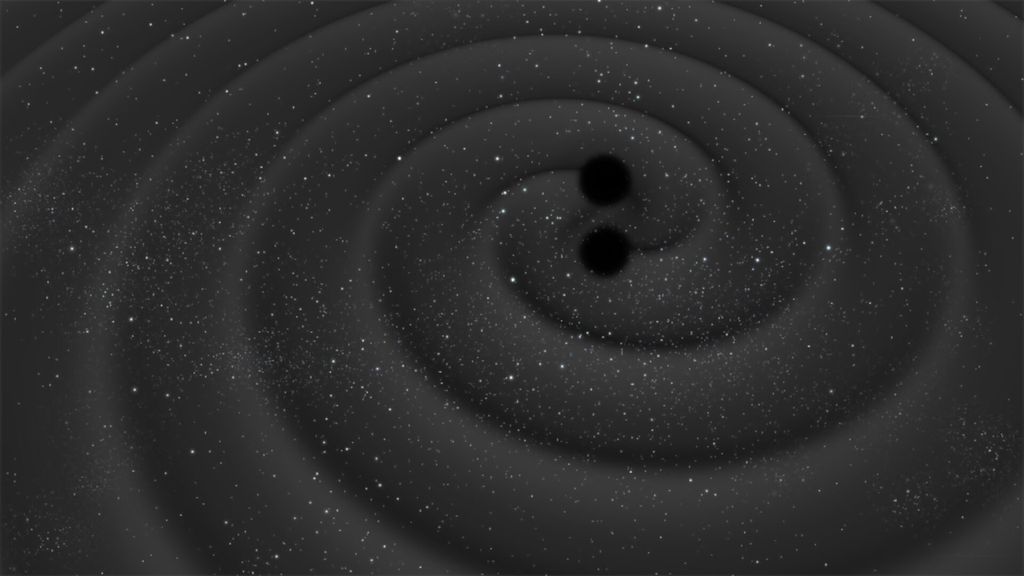In 2019, something unexpected happened at gravitational wave detectors around the world: they picked up a signal that left scientists puzzled.
For those unfamiliar, gravitational waves are ripples in the very fabric of space-time, usually generated when extremely massive objects, like black holes, collide. What made this signal unusual was its duration: less than a tenth of a second—far shorter than the long, continuous signals typically produced by merging black holes.
Researchers named it GW190521, and after careful analysis, they began considering a bold possibility: what if this signal came from a parallel universe?
A preprint article published in September of this year, led by Dr. Qi Lai from the University of the Chinese Academy of Sciences, explores this idea. According to the team, GW190521 could be an “echo” from the collapse of a wormhole.
The concept is fascinating: if the collision of two black holes were powerful enough, it might create a tunnel between universes. The gravitational signal could then travel through this “throat” and reach our cosmos. Since the wormhole would remain open only for a brief moment, this would explain why GW190521 appears to end so abruptly.
Although mathematical models suggest this scenario is unlikely, Dr. Lai emphasizes that there’s no way to rule out the possibility that Earth truly received a signal from another universe.

According to Einstein’s theory of relativity, any object with mass warps the fabric of space-time around it, much like placing weights on a trampoline. When massive objects collide, these distortions ripple outward through the very structure of reality.
In the case of binary black holes—pairs of black holes orbiting each other—these ripples grow stronger as the objects draw closer, creating a characteristic pattern known to scientists as a “chirp.” This chirp is usually what allows researchers to identify a black hole merger from afar, and so far, scientists have detected around 300 such events, all showing this rising pattern.
But GW190521 broke the pattern. Unlike other signals, it lacked the ascending part of the chirp, the portion that occurs as black holes spiral inward before the final collision. Considering that the resulting black hole had roughly 141 times the mass of the Sun, this part of the signal should have been clearly detected.
The leading explanation so far is that, instead of spiraling, the two black holes collided head-on. This would explain the absence of the ascending chirp and adds to the mystery surrounding this unusually brief event.

But Dr. Lai believes there’s another intriguing possibility: what if a wormhole in another universe was involved?
In their paper, he and his colleagues explain that “a wormhole represents an object that connects two separate universes or two distant regions within a single universe through a throat.”
The idea is fascinating. If the merger of two black holes had created a short-lived wormhole, we could, in theory, catch a brief snippet of the chirp from that merger echoing into our own universe. And once the wormhole closed, the signal would be cut off, leaving only a quick burst of gravitational waves.
“The final signal after binary black holes merge in another universe could pass through the throat of a wormhole and be detected in our universe as a short-duration echo pulse,” Dr. Lai explains.
To test this hypothesis, Dr. Lai and his team created a mathematical model of how a wormhole signal would behave and compared it with the actual GW190521 data captured by the LIGO and Virgo detectors.
They also modeled a direct collision in our own universe for comparison. What they found is that the standard collision model fit the data slightly better… but only just, leaving room for the possibility that something truly extraordinary may have occurred.

So basically, this means that the wormhole model could still be an explanation for the GW190521 collision.
The researchers even wrote that the preference for the standard collision model “was not significant enough to rule out the possibility that the wormhole-echo model is a viable hypothesis for the GW190521 event.”
If this turns out to be true, it wouldn’t just be the first proof that wormholes exist—it would also give scientists a completely new tool to study them.
Just imagine: for the first time, we could get a direct glimpse of a universe beyond our own.










